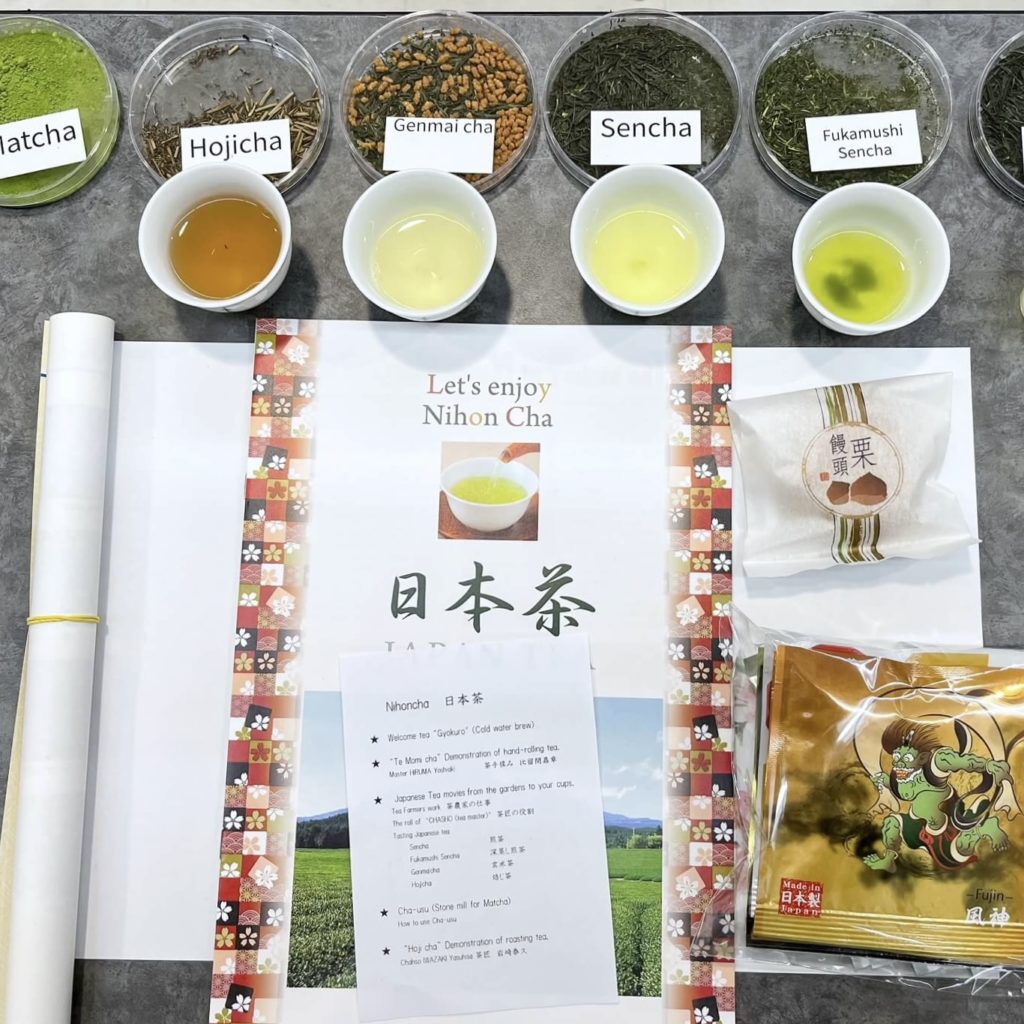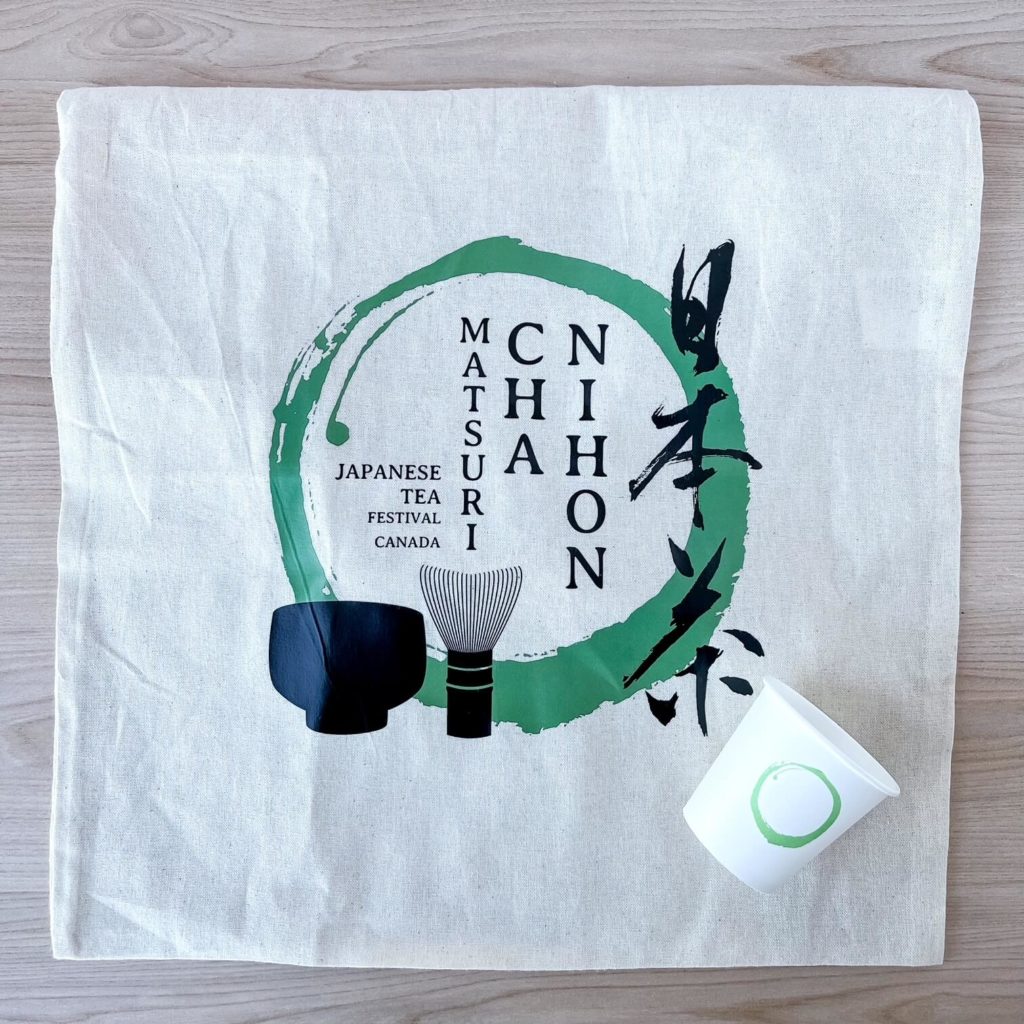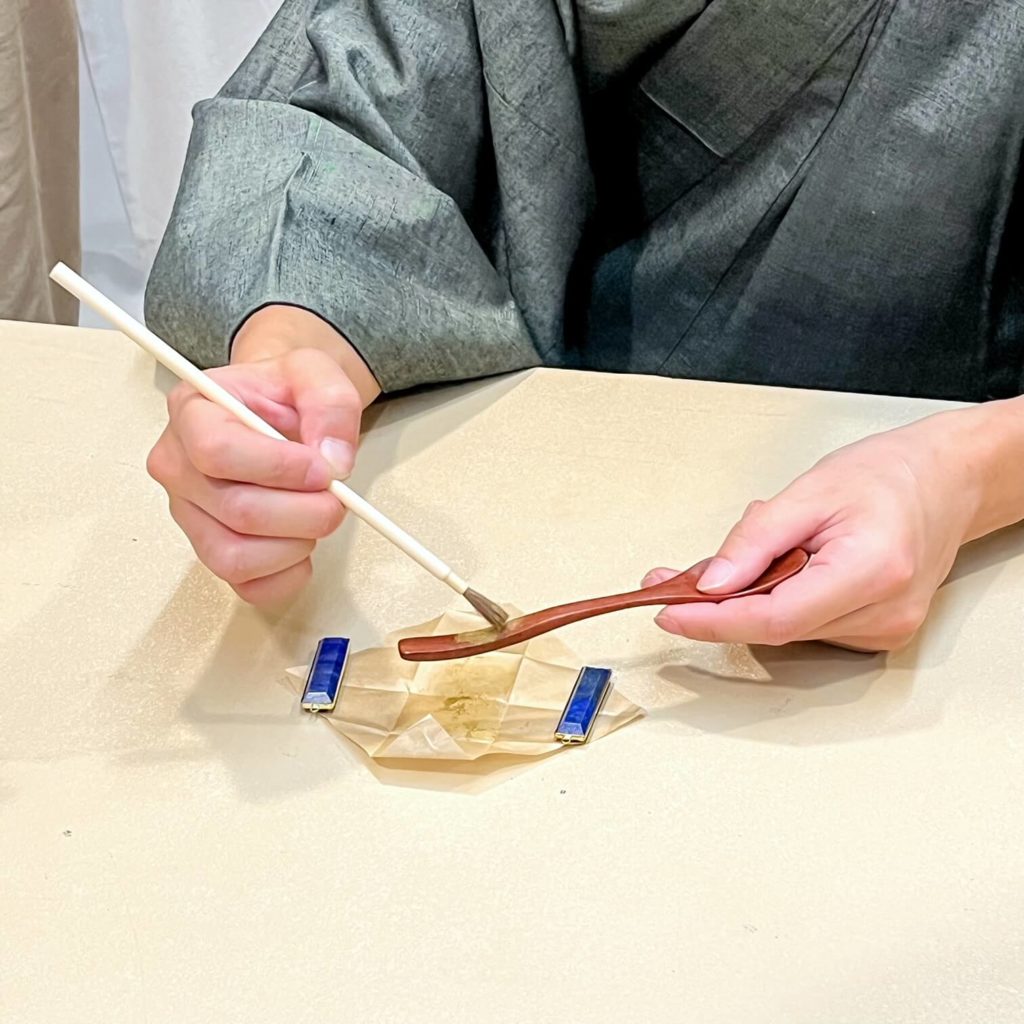
At the end of last year, I was missing Japan, so this Japanese-themed event came at the perfect moment. It was also the first time it was held, so I wanted to see what it was all about!
Description: “For those who love tea, those who enjoy Japanese tea, Japanese culture, and Japanese food, and those who want to explore and learn about these things, this event will be full of fascinating discoveries!”
Review: I learned about the event via Instagram from Momo Tea, the event organizer, whom I met at the Toronto Tea Festival. The Nihoncha Matsuri was a one-day event that was held on Sunday, November 3, 2023, between 10 am to 6 pm at the Japanese Canadian Cultural Centre in Toronto, Canada. The theme was Japanese tea and culture and the event was specifically held in November because of its connection to Japanese tea and how it signified a “new year” for tea drinkers. In the past, November was when a special jar called Cha-tsubo would be open. Inside the jar were tea leaves that were picked during the spring to be matured over the summer months! This was a new fact I didn’t know until I read it on the website. So, I appreciated that the timing of the was connected back to Japanese tea.

What also drew me to this event, aside from the tea, was the unique workshops. The programming for tea events normally consists of talks or demonstrations, so I liked that the event offered hands-on activities. Due to this, I ended up packing my day full of workshops. The workshops ranged from $15 to CAD 90 and were an additional cost on top of the base event ticket fee. I attended four workshops and also visited demonstrations and vendors. Demonstrations and vendors were included as part of the base event ticket fee. The fee also came with a canvas tote bag.
Workshop: Kintsugi Lecture and Maki-e

Description: “Kintsugi is a traditional Japanese art and repair technique that restores broken ceramics to practical use [.]…In the Kintsugi process […] employs Urushi, a sap, […] to bond the fragments and embellish the surface with pure gold. This technique of embellishing with pure gold is known as “maki-e.”
I sadly got to the event a bit late, so I missed most of the talk by the instructor, Shuichi, regarding Kintsugi. It is a process to repair broken ceramics with sap that is embellished with gold or platinum. As the process takes over two months, the workshop focused only on the maki-e, which is the decorative portion. I have always admired the Kintsugi pieces and the idea of repairing ceramics, so I was excited about the hands-on experience! Shuichi provided a demo of each step which was helpful and informative.
The maki-e process consists of drawing a design onto the item and then using a thin layer of red lacquer (urushi) which acts like glue for gold to adhere to it. I drew my pattern on the handle of a matcha whisk (chasen). I picked plum blossoms (umi) as they bloom in late winter, which seemed fitting since the event was in November.
Initially, I assumed I had smudged my application of the gold powder. However, after waiting for the item to cure over a few days, I washed the chasen, and thankfully my application was much cleaner than I thought. I enjoyed learning a portion Kintsugi process, and I had something to take home. I would recommend this to anyone who is interested in the process or enjoys hand-on projects.
- Company: #introjapan
Workshop: Green Tea Ceremony (Sencha-do)

Description: “Sencha-do is a type of tea ceremony. Instead of using powdered matcha green tea, Sencha-do uses a teapot rather than a bowl to prepare tea with tea leaves such as sencha, gyokuro, and hojicha.”
As I had seen Cha-do, the Japanese Matcha Ceremony, I wanted to see Sencha-do! The demonstration was done by Takatori Shindo, Grandmaster of Senchado Oubaku-koufuryu. The event atmosphere was relaxed and the audience was allowed to ask questions during the ceremony. Hojicha, a roasted Japanese green tea, was brewed as part of the demonstration and the roasted smell filled the room. The hojicha was served with Japanese confectionary (wasgashi) in the shape of a Christmas tree!
Demonstration: Wagashi

Description: “Wagashi is an integral part of the cha-do (or sa-do) and sencha-do culture. For this workshop, we will welcome a wagashi artisan who trained in Japan and is currently based in France.”
Takanori Murata, was the same person who made the wasgashi from the Sencha-do. It was fascinating to watch him make all the different designs. We were even given samples, which was a treat. I would love to try my hands at making wagashi in the future! There was also a packet of an assortment of teas to bring home.
- Company: Takanori Murata
Demonstration: Calligraphy (Shodo)

Description: “There will also be a calligraphy area where the first 30 visitors in AM and another 30 visitors in PM can create an original bookmark to take home.”
In the same room as the wagashi demonstration was a gallery of hanging scrolls with calligraphy and tables set up for people to try calligraphy themselves. The staff helped translate my name “Connie” into katakana I wrote out my name and made a bookmark!
- Organization: Shodo Canada
Demonstration: Kimono Dressing

Description: “Hiroko Puopolo, kimono expert of Salon de Tea + Kimono, presents a demonstration of wearing furisode and Nijyudaiko.”
I initially did not plan on attending this Kimon demonstration because I had a busy morning with workshops. However, I noticed that I could drop in, so sat in for a bit before my next workshop. When I was there, I caught the demonstration of how to properly wear a kimono. One thing I learned was that there are many layers and that the base undergarment is traditional white for tea. It was nice to have a showcase of all the clothing paired with an explanation of the significance of each. What a lengthy and labourious process but it looks so lovely at the end!
- Company: Salon de Tea + Kimono
Workshop: Mossball Arrangement (Kokedama)

Description: “Kokedama, a popular Japanese-style object is perfect for creating a Zen or tea ceremony space at home.”
I had seen these moss ball arrangements before, but I had no idea what they were! I find them adorable, so I wanted to make my own! The workshop started with everyone picking a plant and then we were given a demo on how to make one. At its core, a Kokedama is an ornamental plant with moss surrounding it to keep it moist. The moss ball is supposed to be water when it feels light. There was also a selection of plant dishes because if it is set in something too deep, it can develop mold, so I got one and my Kokedama and it fit perfectly!
As someone who doesn’t have a green thumb, this was a fun project. I originally left it too far away from the window, and it was not happy with me. I reached out to Masami Shimizu, who hosted the event, and they provided me some tips. Hopefully, I will be able to get it to green up!
- Company: Flower Bell
Workshop: Introduction to Japanese Tea

Description: “The experts in this workshop will address all of your inquiries, from the fundamental to the complex.”
While I have attended a few introduction workshops, it never hurts to learn more. The workshop started with a video that explained the different Japanese teas and tasting of the various teas. Then there was a live demo on how matcha is hand-grounded and how hojicha is roasted! It was a nice overview of the various Japanese teas! I even got to grind some tencha into matcha! The event also had some tea to bring home, a leaflet about Japanese tea, and a map of where different teas came from!
Demonstration: Rolling Tea by Hand (Te-momi)

Description: “The tea leaves made by hand are unique in shape and have a beautiful finish. They have a long and thin needle-like shape compared to the shape of tea leaves we see daily.”
Throughout the day, there was a demonstration of hand-rolling tea. I was fortunate that when I was in Japan, I had a chance to try this myself. When I saw it the first time in the morning, the leaves were still wet, and as the day progressed, you could see the needle shape starting to emerge and by the end of the day, become glossy dark forest coloured needles!
Vendors

The vendors were broken into three categories: tea, food, and then “others.” As most of my day was filled with workshops and demonstrations, by the time I got to the vendors section, many of the food vendors were low in stock or completely out of stock as I visited after lunchtime. I also have some food restrictions that further limit the foods I can consume. The low stock on food may have been because the vendors were unsure how many guests would arrive. There was a total of 10 food vendors.
As for tea vendors, I was familiar with many of them as I have met them at other tea events. As the theme was Japanese, the tea selection was limited. There were seven tea vendors.
The ‘other’ vendors consisted of Japanese pottery, accessories, life-style, and kimonos and there were 13 of them.

Some key highlights in terms of items purchased were:
- Warabi Mochi from Bashoudo Corporation (I have missed warabi mochi so, I was very excited!)
- Gluten-free snacks from Tsuchi Cafe (These were great!)
- Gluten-free pearls from Lemon Lilly (Have not tried, but this is the first time I have found gluten-free version)
- Teapots from Secret TeaTime (I really enjoy their items and have a shiboridashi from them!)
It is a bit hard for me to fully assess this, as one type of vendor was mostly out of stock by the time I reached them. That being said, It was nice to see all the various Japanese products.
Overall

For an event being held for the first time, I had a blast! I enjoyed the workshops and the demonstrations and there was a lot to do for one day. That being said, all the workshops that I enjoyed, were an additional cost and were not included in the base ticket fee.
My main suggestions for future events are :
- The first workshop should been held a little bit after the event opened, as I heard some people were late to the Kintsugi workshop because of it;
- As part of the ticket, there should have been a print-out of the schedule, especially for people who have selected workshops;
- Workshops should not be held during and a little before and after lunch as there were no other food options on-site aside from the vendors, who sold out on a lot of their foods.
That being said, I would still highly recommend this to others, and I am excited to go next year (4/5 rating)!


2 comments
Wow! That sounded like an awesome event. You really packed your day with so many great workshop. I’m so glad you were able to go!
Thanks for reading! I am glad I went too! Hoping to go again next year.